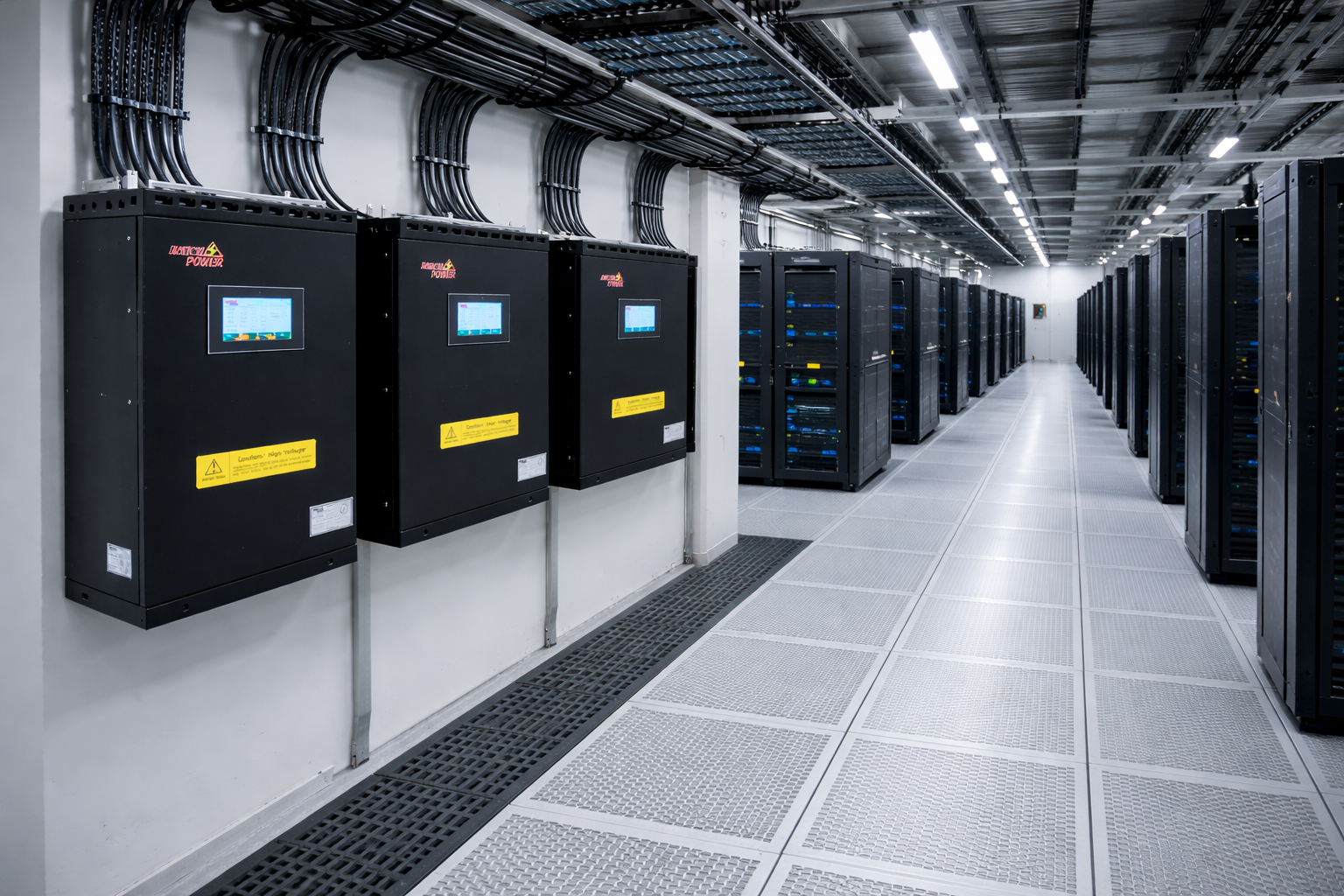Online UPS (Uninterruptible Power Supply) and Line-Interactive UPS represent distinct power protection systems that serve to furnish backup power to electronic devices during power outages or fluctuations. Each system possesses unique attributes and capabilities that differentiate them. Selecting between an online UPS and a line interactive UPS hinges on your specific power protection requirements and the importance of safeguarding your equipment. Here's a concise overview of the pivotal factors for each UPS type:
The Online UPS, also referred to as a double-conversion UPS, operates by initially converting incoming AC power from the mains into DC power. This DC power simultaneously charges the UPS battery while being inverted back into AC power via an inverter circuit. The critical load continuously receives power from this inverter, independent of input power quality. The online UPS stands out for offering the utmost power protection.
Choose Online UPS if:
1. Critical Equipment: Your setup comprises sensitive and vital equipment, such as servers, data centers, medical devices, industrial control machinery, or any application intolerant of even minor power disruptions.
2. Constant Power Quality: You necessitate uninterrupted power conditioning and isolation from utility power oscillations, ensuring consistent and stable power supply. The online UPS excels in shielding against various power disturbances, encompassing surges, sags, spikes, and complete power loss. It ensures steady voltage and frequency regulation, ideal for sensitive gear and critical operations that cannot tolerate downtime.
3. Zero Transfer Time: During blackouts or brownouts, seamless power switchover is vital. The online UPS provides instantaneous backup power without interruption.
In a line-interactive UPS, incoming AC power directly feeds connected load under standard conditions. However, when power fluctuations or outages arise, the UPS employs an automatic voltage regulator (AVR) to adjust voltage to a suitable level, ensuring stable power for the load. If the outage persists, the UPS switches to inverter and battery power.
Choose a Line-Interactive UPS if:
1. Moderate Protection: Your load is smaller or less crucial, encompassing home computers, small office arrangements, networking equipment, and general-purpose electronics.
2. Budget Constraints: Line-interactive UPS systems typically offer a more cost-effective solution than online UPS, making them fitting for scenarios with budget limitations.
3. Basic Voltage Regulation: A certain degree of voltage regulation is necessary to shield your equipment from voltage fluctuations and transient surges, and you can endure a brief transfer time during power disruptions.
In conclusion, if you possess essential equipment or applications necessitating constant and reliable power, an online UPS outperforms despite its higher cost. On the other hand, line-interactive UPS systems prove more suitable for safeguarding smaller loads below 5 KVA, prioritizing affordability. In summary, a line-interactive UPS delivers basic protection with an emphasis on cost-effectiveness, making it an apt choice for less critical environments.




.png)


